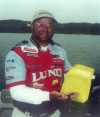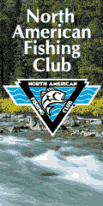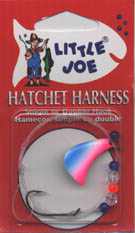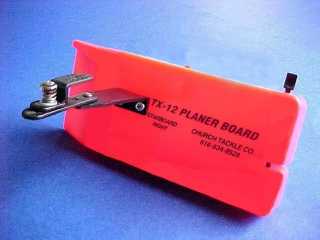
Click
here to Check out the New Leech Tamer and order online













Promotional
Team Favorites
Lodging food and more









|
Chop Walleyes with Hatchet
Spinners
By Ted Takasaki and Scott Richardson
Spinner rigs and bottom bouncers do the trick for a lot of good reasons;
They make a fish-attracting commotion that offers both flash and vibration
Walleyes can hone in on them by using both sight and lateral lines
Bottom-bouncers take you down fast, they keep you in the strike zone
and they let you cover lots of water in a short period of time.
When dressed with a nightcrawler, spinner rigs offer a scent and taste
that true trophies, even finicky ones, find hard to resist. Crankbaits
are great, but natural bait is tough to beat when times are tough.
Replace the bottom bouncer with a snap weight to deploy spinner rigs
at varied depths in the water column and catch suspended fish.
You can spread baits with planer boards to cover a wide corridor and
get the spinners away from noise and the shadow of the boat.
Here's how to start;
Spinner Basics
A state of the art spinner rig starts with 3 to 5 foot snell tied to
a barrel swivel or loop knot. Fasten the swivel to the bottom bouncer.
Shorten your leader length if you get hung up too often.

Lindy Little Joe
X-Change
bottom bouncer |
 |
Next comes a Lindy Little Joe X Change clevis, which is the small piece
of plastic that threads onto the line and holds your blade so it can spin
freely. It's designed to let you snap blades in and out fast to change
colors and sizes without having to retie the entire rig. Start with
blades in #5s or #7s. Try metallics of gold, silver and bronze when the
sun is shining; use florescent colors when it's cloudy or in dingy water.
Add enough beads to keep the spinner away from the front hook. Experiment
with colors to see what the fish want.If you tie your own, the nightcrawler
harness should feature two razor-sharp Gamakatsu Octopus style hooks in
size #4 or #2 |

Lindy
Hatchet Blades |
Stick one right in the 'crawler's nose and the other farther back so
the worm swims straight to avoid line twist. If you don't want
the hassle of making your own rigs, Lindy Little Joe makes a great pre-tied
one called a Hatchet Harness, each features both the X Change clevis and
the uniquely-designed Hatchet blade. |
Stick one right in the 'crawler's nose and the other farther back so the
worm swims straight to avoid line twist. If you don't want
the hassle of making your own rigs, Lindy Little Joe makes a great pre-tied
one called a Hatchet Harness, each features both the X Change clevis and
the uniquely-designed Hatchet blade. Shaped just the way they sound,
Hatchet blades turn easy and create more throbbing vibrations and flash
at slower speeds than the standard Colorado, Indiana or Willow Leaf blades.
Lindy makes a standard Hatchet Harness and a floating version toadd buoyancy,
bulk and color.
Lindy also applied the principle behind the X Change system to bottom-bouncer
design. The result is a bottom bouncer that lets you change weights
fast and easily. Rather than being fixed in place, the X Change weight
merely slides onto the wire and is held in place with a rubber grommet
or two, if you like.
If you want to go deeper or shallower, you can then change the size
of the weight in a matter of seconds. If you get hung up, merely
pull the wire free and replace the weight without lost time. The X Change
Bottom Bouncers come in sizes from one -half to three ounces and are packaged
with spare weights. Use two weights on a wire to achieve mid-range sizes
or weights over 3 ounces.
A standard rule of thumb for bottom bouncer is to keep a 45-degree
angle between your line and the water. Use 1 ounce for depths of 10 feet
or less, 1-1/2 ounces for 10 to 20 feet, 2 ounces for 20 to 30 feet and
3 ounces and more to go deeper than that. When holding your rod,
the best rod for the job is an 6 to 7 foot medium to medium-heavy stick
with a medium tip rated for a lure weight of 1/2 to 1-3/4 ounces.
A great rod for this application is a St. Croix Legend Elite EC68MXF.
While trolling boards, you’ll have to beef up your stick by going with
a heavier casting rod, like St. Croix’s planer board rods, GT80M.
For your leader material, use 10 or 12-pound Stren Super Tough for
its ability to withstand assault from rocks and brush. Still, you
should check the line for nicks often. Big fish will find the weak
link in your tackle. You'd hate to loose a 10-pound trophy of a lifetime
at boatside because of a broken line. While trolling, use line-counter
reels. The "why" of that will be clear in a moment.
On the water
Where to start? Check with bait shops, guides and even the Internet
for the latest fishing reports to see where the big schools are located.
If you can get coordinates, a Global Positioning Satellite system can take
you right there. Maps are available that feature the waypoints for
places that traditionally hold fish.
Like the general who said, "Don't fire 'til you see the whites of their
eyes," don't fish until you see 'eyes on your sonar screen. Run from
spot to spot, slowing every so often to see if you can see bait fish or
the tell-tale marks that signal walleyes. That search method is a
lot faster than trying to find fish by fishing.
Cover the water column from top to bottom once over a school.
Put out two lines with bottom bouncers. Use a snap weight on a third line.
Watch the dial on your line counter reel to let out 50 feet of line, then
add the weight and let out 50 more feet of line. Follow the same
procedure on the fourth line, but use a different-sized snap weight. The
50/50 formula lets you return to the same depth over and over.

Church Tackles TX-12 Planer Board
Click
here to order on line |
Use planer boards to cover water from side to side. Troll slowly
from .5 mph to 1.5 mph with the waves. Use gentle "S" turns to cover
more area and to vary the speed of the baits. Boards on the inside
turns go slower, boards on the outside go faster. |
When fishing structure, hand hold your rod and move up and down the
structure watching your electronics. Fish tight to the bottom are
perfect for bottom bouncers and keep reaching back to “tick” the bottom.
Listen to the fish, let them tell you what combination of blade color
and size, speed and depth they want.
Take a "spin" around, bottom bouncers and snap weights. They just might
be your ticket to the trophy of a lifetime.
Fish
Clix Banner Exchange
Walleyes Inc. website is maintained
by Randy
Tyler Fishing the In-Fisherman Professional Walleye Circuit, Masters
Walleye Circuit and the Wal Mart RCL Circuit. All rights reserved.Copyright
1999/2003
Please visit these site sponsors
Daiichi/Tru-Turn Hooks,
Lindy
Little Joe,
R-A.M Mounting Systems,
Ranger
boats, Mercury Outboards,Bedford
Sales , Church Tackle, Panther
Marine Products,
Webfoots body sock,
Bait
Rigs Tackle ,Dual Pro Charging Systems,
Daiwa
Rods and Reels,
Driftcontrol
Wind socks,
Trojan Batteries
|






